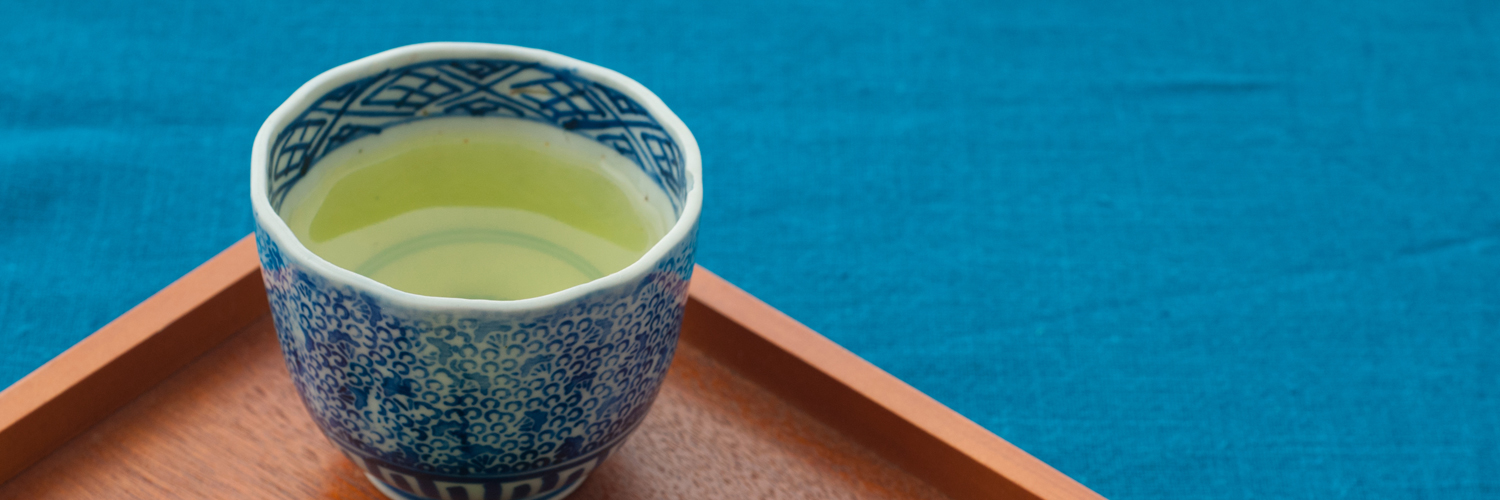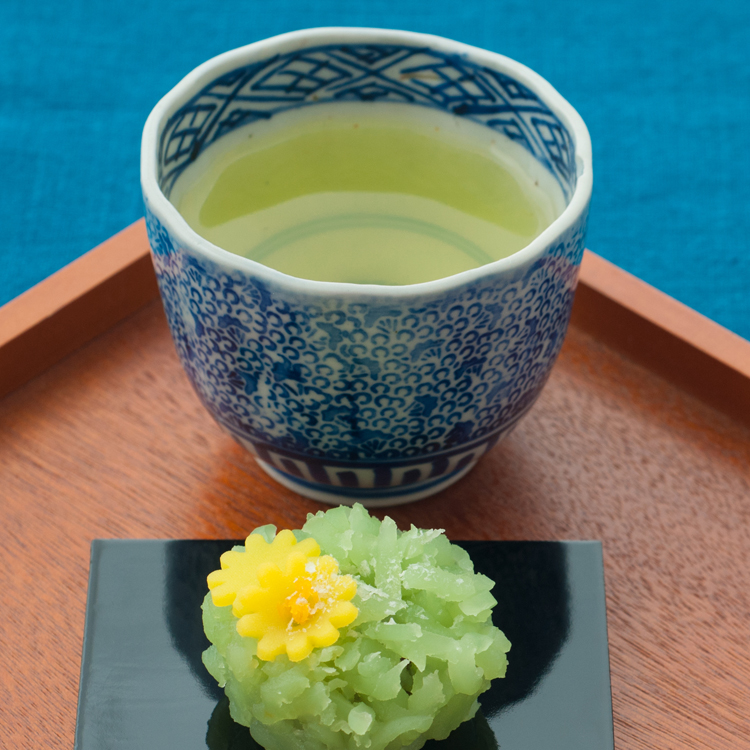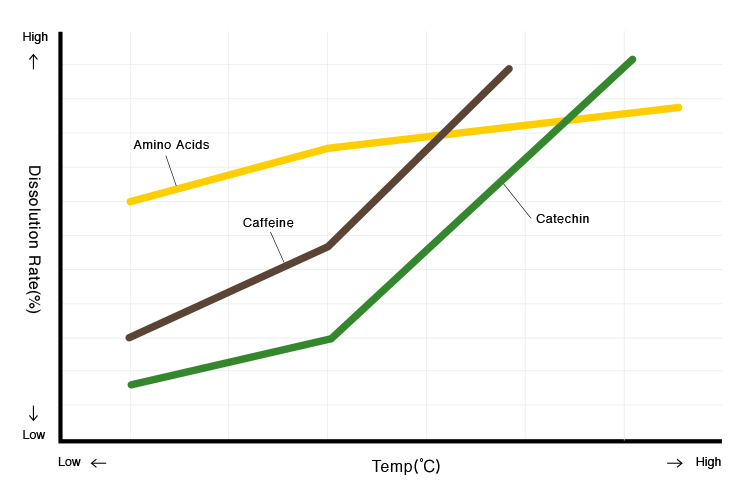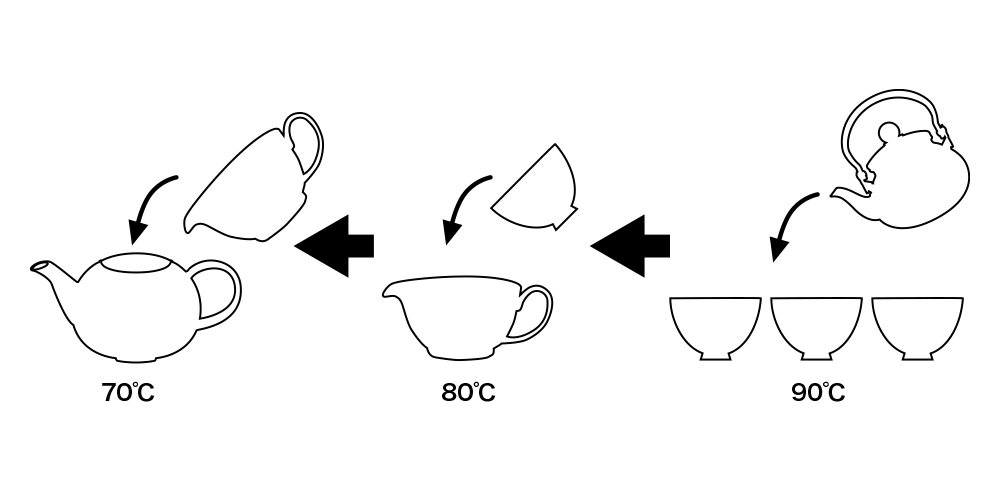GREEN
TEA




| Tea Leave Amount (per person) |
Hot Water Amount (per person) |
Water Temp | Filtration Time | |
| SENCHA | 2〜3g | 80ml | 70〜90℃ | 60〜120" |
| GYOKURO | 3〜4g | 20ml | 50〜60℃ | 120〜150" |
| KABUSE-CHA | 2〜3g | 80ml | 70〜80℃ | 60〜120" |
| GENMAI-CHA | 3g | 130ml | 90〜100℃ | 30" |
| HOUJI-CHA | 3g | 130ml | 90〜100℃ | 30" |
| BAN-CHA | 3g | 130ml | 90〜100℃ | 30" |
| KUKI-CHA | 2〜3g | 80ml | 80〜90℃ | 60〜120" |
| MATCHA | 2g | 60ml | 70〜80℃ | - |
The amount of tea leaves used depends on the type of tea, and how many people are being served. When brewing a single serving, it is best to around 4-5 grams of tea leaves. When serving tea to 5 or more people, it is best to use around 2 grams per person. As taste comes down to personal preference, try modifying the amounts of tea leaves to find which amount you prefer.
[ How to Store Tea Leaves ]
Tea leaves deteriorate in quality from the effects of oxidization, moisture, temperature, and sunlight. They also absorb nearby odors. Tea leaves should be stored in a sealed container and kept in a dark, cool location.
The ideal temperature for tea leaf storage is between 5-10℃, so they are best preserved in a refrigerator. In order to prevent condensation from the change in temperature, open the container only after it has come back up to room temperature.
The amount of hot water used varies greatly between different types of tea. Use too little and the flavor will be too strong, but use too much and the flavor will be to bland. The tea leaves will also absorb some of the water. Experiment with the hot water amount in your tea to discover your strength preference.
The flavor of the tea can be controlled by the temperature of the water used. The flavor of tea can be divided into two major groups:
- Sweet and savory flavors from amino acids
- Astringent and bitter flavors from catechins and caffeine
The amino acids are brought out regardless of the temperature of the water, but catechins and caffeine are only brought out by high temperatures. This is why Gyokuro, Kabusecha, and high grade Sencha, meant to be enjoyed for their savory or sweet flavors, are made with lower temperature water. Genmaicha, Hojicha, and Bancha, are made with higher temperature water to bring out refreshing and bitter flavors.

[ Advice ]
There is a convenient method to measure hot water while lowering its temperature.
Pour boiled water into cups for each person to be served. Each time the water is poured, the temperature decreases about 10℃. For example, if you want the water at a temperature of 70℃, pour the 100℃ water into a cup → 90℃, then into another vessel → 80℃, and then into a teapot → 70℃. In Japan there are vessels used specifically for cooling hot water.

Filtration time varies depending on the type of tea. Once the filtration time has passed, the tea should be poured little by little and evenly into each cup. This helps give the tea a balanced taste. Also, make sure to pour every last drop from teapot. If tea is left in the teapot, future servings will not taste as good as the first.
